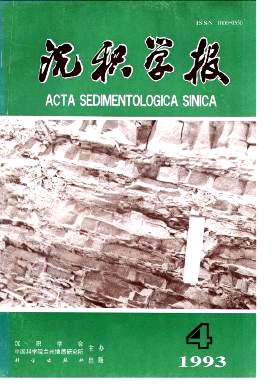Sedimentary Facies and Sequence Stratigraphy of Lower and Middle Triassic in South and Central Guizhou
- Publish Date: 1993-12-10
Abstract: By using the method of modern sedimentology analysis to study carbonate and terrigenous clastic sediments of the Early and Middle Triassic in South and Central Guizhou, sedimentary sequences and mechanism made those sequences of this area are discussed. In the paper, sediment characteristics and sedimentary sequences, petrologic assemblage of carbonate platform, slope and basin facies is discussed individually, the carbonate platform deposited dolote, bird's-eye, secondary pore dolomite, dolomite breccia and banded limestone. The slope belt developed gravity flow and turbidite, essential petrologic assemblage for thin limestones and limestone breccia, low density turidite and deep wate marls or mudstones occurred in the basin. Sequence stratigraphy of Lower and Middle Triassic in the area is studied in the paper and the paper emphasised in sequence stratigraphy and sea levle changes, two types of sequence boundaries were identified, i.e. , Type I, Indian -Olenekian and Olenekian -Anisian. Type II, Permian -Indian, there are two type II sequence boundaris in the Olenekian, contemporaneously, each depositional sequence composed of lowstand systems tract, transgressive systems tract and highstand systems tract, and lowstand, hightand and transgressive systems tract of each depositional sequence are discussed on petrologic assemblage. According to the relationship between the systems tract and sea level changes, the curves showing the sea level changes in Southern and Central Guizhou during Early and Middle Triassic are also established by the author in this paper, and worker suggest that sedimentary characteristics on carbonate platform, slope and basin be controlled by sea level changing and structual porcess.
| Citation: | Yang Ruidong. Sedimentary Facies and Sequence Stratigraphy of Lower and Middle Triassic in South and Central Guizhou[J]. Acta Sedimentologica Sinica, 1993, 11(4): 24-29. |






 DownLoad:
DownLoad: